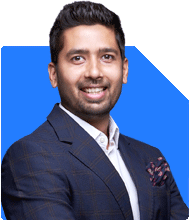Should I buy a new direct mutual fund with existing registered details?
Ramalingam Kalirajan |10870 Answers |Ask -Follow
Mutual Funds, Financial Planning Expert - Answered on Sep 22, 2024
He has an MBA in finance from the University of Madras and is a certified financial planner.
He is the director and chief financial planner at Holistic Investment, a Chennai-based firm that offers financial planning and wealth management advice.... more

I have 3 mutual funds (growth type) through an agent; can I buy another new direct mutual fund using the same registered details?
Yes, you can invest in a direct mutual fund with the same details. However, there are some key factors you should consider before switching or adding to your existing portfolio.
Disadvantages of Direct Mutual Funds
Let’s evaluate the drawbacks of investing directly in mutual funds:
Lack of Professional Guidance: Direct mutual funds do not offer the support and advice of a Certified Financial Planner (CFP) or Mutual Fund Distributor (MFD). A good MFD understands the market better than most individual investors and can guide you through various market cycles.
Time-Consuming: Investing directly in mutual funds requires constant monitoring of your portfolio. You need to make decisions on rebalancing, switching, and asset allocation on your own, which can take up a lot of your time.
Emotional Decisions: Direct investors tend to make impulsive decisions, especially during volatile market conditions. A certified professional helps maintain discipline and prevent emotional reactions that could lead to potential losses.
Missed Opportunities: Many direct investors miss out on changes in the market that could benefit their portfolio. MFDs often have real-time market insights that can add significant value to your investments.
Benefits of Regular Mutual Fund Investment Through a Professional MFD
When you invest through a certified MFD, there are multiple advantages that you may miss with direct mutual fund investing:
Expertise and Advice: MFDs offer expert advice, helping you make informed decisions. They guide you in fund selection based on your financial goals, risk appetite, and investment horizon.
Customized Portfolio Management: An MFD will offer tailor-made portfolio suggestions, ensuring that you diversify your investments across various sectors, ensuring long-term growth and stability.
Ease of Investment: Investing through an MFD takes the hassle out of managing your portfolio. The MFD handles documentation, updates you on market trends, and helps rebalance your portfolio when necessary.
Tax Planning: A professional MFD helps you choose tax-efficient funds that align with your financial goals. They can guide you to make tax-saving investments without compromising your long-term financial growth.
Emotional Shield: During market volatility, MFDs keep you grounded. They guide you through tough times and help you avoid impulsive decisions based on short-term market fluctuations.
Concern About Your Current Agent?
If you are uncomfortable with your current agent or feel they are not adding enough value, it’s best to find a new professional. Certified MFDs offer better services and personalized support, adding more value to your investments. Switching to a more qualified professional is always an option.
It’s vital to have an agent who works in your best interest, is transparent with fees, and offers insightful recommendations. You can transfer your existing portfolio to a new MFD with ease, ensuring you still get professional support for your investment journey.
Additional Considerations
Review Your Financial Goals: Your financial goals play a crucial role in determining the right investment strategy. Ensure that your MFD understands your objectives, whether they are wealth creation, retirement planning, or child education.
Diversify Your Portfolio: It’s important to spread your investments across asset classes like equity, debt, and gold for a balanced portfolio. A Certified Financial Planner can help you decide the right asset allocation.
Rebalancing Your Portfolio: Regular rebalancing helps keep your investments aligned with your goals and market conditions. A professional MFD will provide advice on when and how to rebalance your portfolio for optimal performance.
Stay Disciplined: Investments are for the long term. Having a certified professional guide you will help ensure that you stay on course, even during market volatility.
Final Insights
Investing through a professional MFD offers significant advantages over direct mutual fund investing. It ensures that your portfolio is well-managed, aligns with your financial goals, and offers expert guidance on making the best investment decisions. If you are dissatisfied with your current agent, it’s best to switch to a more experienced professional who can add value to your investment strategy.
While direct mutual funds may seem like a cost-effective option, they lack the guidance, insight, and strategic planning that comes with investing through a Certified Financial Planner.
By aligning your investments with a certified professional, you can ensure that your portfolio is not only well-managed but also optimized for growth, risk management, and long-term financial success.
Best Regards,
K. Ramalingam, MBA, CFP,
Chief Financial Planner,
www.holisticinvestment.in
Instagram: https://www.instagram.com/holistic_investment_planners/
You may like to see similar questions and answers below
Kirtan A Shah | Answer |Ask -Follow
MF Expert, Financial Planner - Answered on Sep 22, 2023
Ramalingam Kalirajan |10870 Answers |Ask -Follow
Mutual Funds, Financial Planning Expert - Answered on May 03, 2024
Ramalingam Kalirajan |10870 Answers |Ask -Follow
Mutual Funds, Financial Planning Expert - Answered on Nov 04, 2024
Dr Dipankar Dutta |1836 Answers |Ask -Follow
Tech Careers and Skill Development Expert - Answered on Dec 05, 2025
Ulhas Joshi |280 Answers |Ask -Follow
Mutual Fund Expert - Answered on Dec 05, 2025
Dr Dipankar Dutta |1836 Answers |Ask -Follow
Tech Careers and Skill Development Expert - Answered on Dec 04, 2025
Ravi Mittal |676 Answers |Ask -Follow
Dating, Relationships Expert - Answered on Dec 04, 2025
Anu Krishna |1745 Answers |Ask -Follow
Relationships Expert, Mind Coach - Answered on Dec 04, 2025
Anu Krishna |1745 Answers |Ask -Follow
Relationships Expert, Mind Coach - Answered on Dec 04, 2025
Mayank Chandel |2562 Answers |Ask -Follow
IIT-JEE, NEET-UG, SAT, CLAT, CA, CS Exam Expert - Answered on Dec 04, 2025
Mayank Chandel |2562 Answers |Ask -Follow
IIT-JEE, NEET-UG, SAT, CLAT, CA, CS Exam Expert - Answered on Dec 04, 2025
Mayank Chandel |2562 Answers |Ask -Follow
IIT-JEE, NEET-UG, SAT, CLAT, CA, CS Exam Expert - Answered on Dec 04, 2025
Mayank Chandel |2562 Answers |Ask -Follow
IIT-JEE, NEET-UG, SAT, CLAT, CA, CS Exam Expert - Answered on Dec 04, 2025























